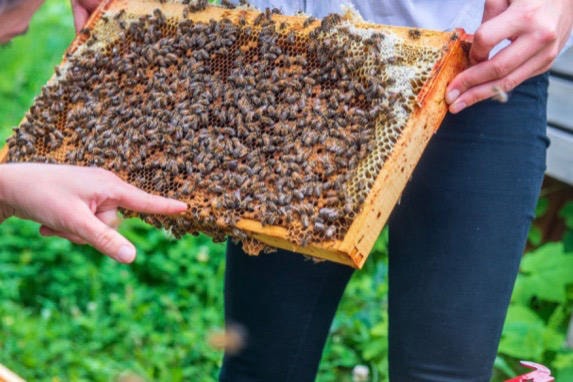The cooler evenings and yellow leaves are wonderful indicators that fall is just around the corner.
It is also a reminder that we should start thinking about winterizing our beehives - preparing our colonies for the long rainy months to come. Although what does this entail?
There are few key points to ensure you cover prior to winter.
First, is your hive disease-free? During your hive inspections, you should be looking at the coloration and texture of the larva. Is the larva plump and pearly white or is it sticky, slumped to the edge of the cell, and yellow in colouring? If you find the larva in your colonies to be of the latter, there may be brood disease. In that case, contacting your local apiary inspector should be a priority. In addition, you will want to ensure your varroa mite count is at an all-time low. This means doing a sugar shake test to see how many mites are crawling within your colony and treating appropriately if they exceed a certain threshold.
Secondly, does you hive have enough food stores? Depending on which region your hives are located, you may have had a poor nectar flow and therefore less than ideal amounts of honey stored in the colony for winter. Now is the time to take a peek - how many frames of honey does your colony have stored currently? If the hive is feeling light perhaps consider supplement feeding with sugar syrup. This way the colony can continue to store nectar (in which they transfer into honey) instead of consuming their winter stores now and going into winter empty and starving.
Third, how much of their home are they occupying? Making sure the colony is housed in the appropriately sized home is quite important. If there is too much space, the honeybees have to expend lots of energy keeping the unused home warm. By reducing their home to an appropriate size it will make it easier for the bees to maintain a stable internal temperature.
You don’t necessarily have to be a beekeeper to have a hand in preparing the pollinators for winter. As a gardener, now is the time to take stock of what is blooming. The late summer and fall flowers are important food sources for all pollinators, not just the honeybees. As food becomes scarce in the drier August month, some pollinators struggle to accumulate enough food stores for winter. Taking stock of what is in bloom and setting a reminder to plant these flowers come next summer, is a great way to help our local pollinators.
For winterization questions or winter beekeeping equipment, contact Rachel at info@homegrownbee.ca
